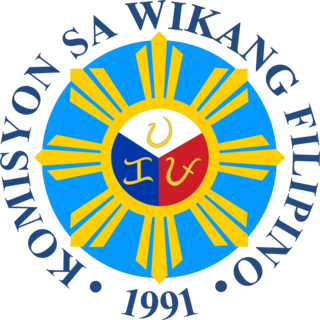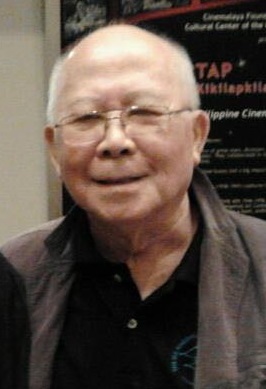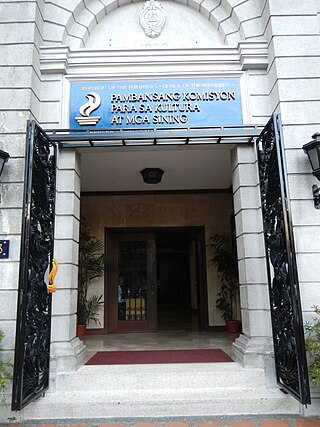
Occidental Mindoro, officially the Province of Occidental Mindoro, is a province in the Philippines located in the Mimaropa region. The province occupies the western half of the island of Mindoro. Its capital is Mamburao, but the largest municipality is San Jose occupying almost half of the entire province. As of 2020, Occidental Mindoro has 525,354 inhabitants.

San Jose, officially the Municipality of San Jose, is a 1st class municipality in the province of Occidental Mindoro, Philippines. According to the 2020 census, it has a population of 153,267, representing a third of the provincial population, and is the largest among cities and municipalities in the Mimaropa region.

Mangyan is the generic name for the eight Indigenous groups found on the island of Mindoro, southwest of the island of Luzon, each with its own tribal name, language, and customs. The total population may be around 280,001, but official statistics are difficult to determine under the conditions of remote areas, reclusive tribal groups and some having little if any outside world contact.

The Commission on the Filipino Language (CFL), also referred to as the Komisyon sa Wikang Filipino (KWF), is the official regulating body of the Filipino language and the official government institution tasked with developing, preserving, and promoting the various local Philippine languages. The commission was established in accordance with the 1987 Constitution of the Philippines.

Bulalacao, officially the Municipality of Bulalacao, is a 3rd class municipality in the province of Oriental Mindoro, Philippines. According to the 2020 census, it has a population of 44,366 people.

Bienvenido L. Lumbera was a Filipino poet, critic and dramatist. Lumbera is known for his nationalist writing and for his leading role in the Filipinization movement in Philippine literature in the 1960s, which resulted in his being one of the many writers and academics jailed during Ferdinand Marcos' Martial Law regime. He received the Ramon Magsaysay Award for Journalism, Literature and Creative Communications in 1993, and was proclaimed a National Artist of the Philippines for literature in 2006. As an academic, he is recognized for his key role in elevating the field of study which would become known as Philippine Studies.

The National Commission for Culture and the Arts of the Philippines is the official government agency for culture in the Philippines. It is the overall policy making body, coordinating, and grants giving agency for the preservation, development and promotion of Philippine arts and culture; an executing agency for the policies it formulates; and task to administering the National Endowment Fund for Culture and the Arts (NEFCA) – fund exclusively for the implementation of culture and arts programs and projects.

The National Museum of Anthropology, formerly known as the Museum of the Filipino People, is a component museum of the National Museum of the Philippines which houses Ethnological and Archaeological exhibitions. It is located in the Agrifina Circle, Rizal Park, Manila adjacent to the National Museum of Fine Arts building.
The arts in the Philippines reflect a range of artistic influences on the country's culture, including indigenous art. Philippine art consists of two branches: traditional and non-traditional art. Each branch is divided into categories and subcategories.

Edwin Gariguez is a Filipino religious leader and environmentalist. He was awarded the Goldman Environmental Prize in 2012, for his voicing of protests on behalf of indigenous communities against large scale mining projects in the Philippines. Edwin Gariguez was the former executive secretary of National Secretariat for Social Action (NASSA), the humanitarian, advocacy and social development arm of the Catholic Bishops' Conference of the Philippines (CBCP).

The Mounts Iglit–Baco Natural Park (MIBNP) is a legislated protected area of the Philippines and an ASEAN Heritage Park located in the island of Mindoro in the central Philippines. It was first established in 1970 by virtue of Republic Act No. 6148 as a national park that covered an area of 75,445 hectares surrounding Mount Iglit and Mount Baco in the interior of Mindoro. The park is the home of the largest remaining population of the critically endangered tamaraw. In 2003, the Association of Southeast Asian Nations listed it as one of its four heritage parks in the Philippines. The park has also been nominated to the Tentative List of UNESCO World Heritage Sites in 2006. In 2018, the park was designated as a "Natural Park" under the Republic Act No. 11038 or the Expanded National Integrated Protected Areas Systems (ENIPAS) Act of 2018, which increased the area to 106,656 hectares.

The National Living Treasures Award, alternatively known as the Gawad sa Manlilikha ng Bayan, is conferred to a person or group of artists recognized by the Government of the Philippines for their contributions to the country's intangible cultural heritage. A recipient of the award, a National Living Treasure or Manlilikha ng Bayan is "a Filipino citizen or group of Filipino citizens engaged in any traditional art uniquely Filipino, whose distinctive skills have reached such a high level of technical and artistic excellence and have been passed on to and widely practiced by the present generations in their community with the same degree of technical and artistic competence."
Intangible cultural heritage (ICH) includes traditions and living expressions that are passed down from generation to generation within a particular community.

Whang-od Oggay, also known as Maria Oggay, is a tattoo artist from the village of Buscalan within Tinglayan, Kalinga, Philippines. She is often described as the "last" and oldest mambabatok and is part of the Butbut people of the larger Kalinga ethnic group.
Ambahan is a traditional form of poetry by the Hanunó'o Mangyan people of Mindoro, Philippines.
Lang Dulay was a Filipino traditional weaver who was a recipient of the National Living Treasures Award.
Uwang Ahadas was a Filipino folk musician of the Yakan people who was a recipient of the National Living Treasures Award.
Fu Yabing Masalon Dulo, commonly referred to as Fu Yabing, was a Filipino textile master weaver and dyer, credited with preserving the Blaan traditional mabal tabih art of ikat weaving and dyeing. At the time of her death, she was one of only two surviving master designers of the mabal tabih art of the indigenous Blaan people of southern Mindanao in the Philippines.
Ambalang Ausalin was a Filipino master weaver from the city of Lamitan, Basilan.










